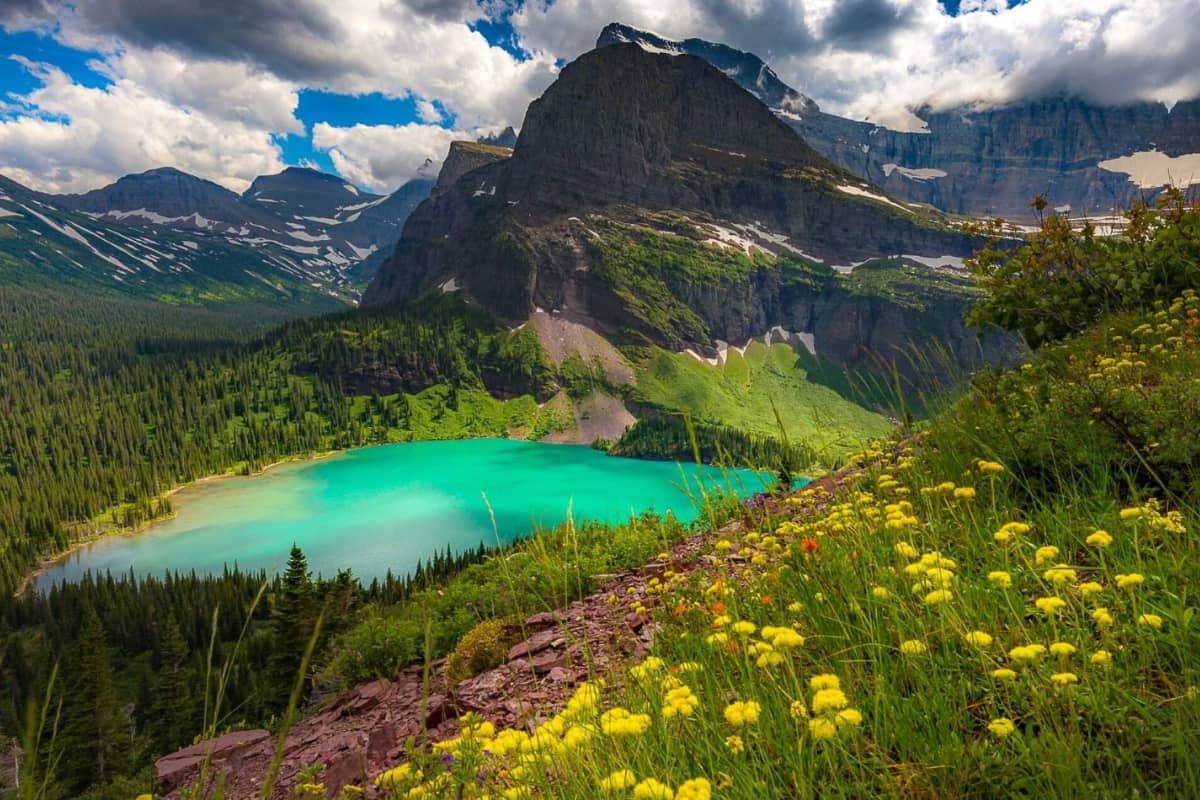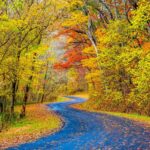Glacier National Park, a pristine wilderness in Montana, is a magnet for nature lovers, hikers, and adventure seekers. With its stunning landscapes, diverse wildlife, and opportunities for outdoor activities, it’s no surprise that millions of tourists flock to this natural wonder every year. However, with the influx of visitors comes the risk of falling victim to various tourist scams that can turn an idyllic vacation into a stressful ordeal. To help you stay safe and make the most of your trip, here are the top 10 tourist scams to watch out for in Glacier National Park.
1. Fake Park Rangers
Imagine you’re hiking along one of Glacier’s picturesque trails when you’re suddenly approached by someone dressed as a park ranger. They claim you’ve violated a park rule and demand an on-the-spot fine. This is a common scam where individuals pose as park rangers to extort money from unsuspecting tourists.
Real-Life Example: In recent years, there have been reports of fake park rangers targeting tourists near popular trailheads, particularly around the Logan Pass area. These scammers often prey on those unfamiliar with park rules, using intimidation tactics to force compliance.
How to Avoid: Authentic park rangers will always have official identification, including a badge and name tag. They will never ask for cash payments on the spot. If you’re unsure, ask to see their identification or report the encounter to the park headquarters.
2. Overpriced Lodging Scams
Finding a place to stay near Glacier National Park can be challenging, especially during peak season. Scammers exploit this by setting up fake lodging websites or posting fraudulent ads for cabins, lodges, or campsites.
Real-Life Example: Many travelers have fallen victim to these scams by booking accommodations through third-party websites or classified ads, only to arrive and find out that their reservation doesn’t exist, or the property is significantly different from what was advertised.
How to Avoid: Always book accommodations through the official Glacier National Park website or well-known platforms like Airbnb, Booking.com, or directly with reputable hotels and lodges. Be wary of deals that seem too good to be true, and double-check the property’s legitimacy by reading reviews and contacting the host directly.
3. Phony Wildlife Photography Tours
Glacier National Park is home to a variety of wildlife, from grizzly bears to mountain goats, making it a prime destination for photography enthusiasts. However, scammers often advertise fake or poorly managed wildlife photography tours, promising exclusive encounters with wildlife that they cannot deliver.
Real-Life Example: Tourists have reported paying high fees for wildlife tours that ended up being nothing more than a drive through the park with no guarantee of seeing any animals, or worse, tours that didn’t happen at all.
How to Avoid: Research and book wildlife tours through reputable companies with a proven track record. Look for reviews on platforms like TripAdvisor and Google, and avoid tours that don’t provide a clear itinerary or detailed information about what to expect.
4. Fake Parking Fees
Parking near popular attractions like the Going-to-the-Sun Road or Many Glacier can be challenging, and scammers take advantage of this by setting up fake parking lots or charging exorbitant fees for parking in unauthorized areas.
Real-Life Example: There have been incidents where tourists were directed to park in makeshift lots by individuals claiming to be park employees, only to be charged inflated fees. Later, they discovered that the area was not an official parking lot and that free parking was available nearby.
How to Avoid: Only park in designated parking areas within the park, and pay any fees at official kiosks or through the park’s mobile app. If someone is directing you to a parking area, verify that it is part of the park’s facilities before handing over any money.
5. Bogus Equipment Rentals
Glacier National Park offers numerous opportunities for outdoor activities, from kayaking on Lake McDonald to biking along the park’s scenic roads. However, some tourists have been scammed by renting equipment from unscrupulous vendors who either fail to deliver the equipment or provide defective gear.
Real-Life Example: Some travelers have reported renting bikes or kayaks online, only to arrive and find no equipment available or gear that was in poor condition and unsafe to use.
How to Avoid: Rent equipment from well-known and established rental shops within or near the park. Always inspect the equipment thoroughly before use, and if possible, make the rental in person rather than online.
6. Donation Scams
Scammers often pose as representatives of environmental or wildlife charities, soliciting donations from tourists in and around Glacier National Park. These scammers may approach you directly or set up fake donation booths near popular park entrances.
Real-Life Example: Tourists have reported being approached by individuals claiming to raise funds for wildlife conservation, only to later discover that the charity was fake and their money was pocketed by the scammer.
How to Avoid: Only donate to recognized charities through their official websites or at sanctioned events. Be cautious of unsolicited requests for donations, and if in doubt, ask for credentials or information about the charity before donating.
7. Ticket Reselling Scams
As Glacier National Park becomes increasingly popular, so do ticket reselling scams. These scams involve individuals or websites selling fake or overpriced tickets to park attractions or events.
Real-Life Example: There have been cases where tourists purchased tickets for activities like guided tours or special events, only to find out later that the tickets were not valid, leaving them out of both money and the experience.
How to Avoid: Purchase tickets only through the official Glacier National Park website or authorized vendors. Be cautious of offers for discounted tickets from unofficial sources, as these are often too good to be true.
8. Fake Tour Guides
Hiring a guide can enhance your experience in Glacier National Park, especially if you’re unfamiliar with the terrain or looking for a more in-depth exploration. However, unlicensed or fake guides may offer their services, leading tourists on unsafe or unauthorized trails.
Real-Life Example: Tourists have reported being misled by guides who lacked knowledge of the park, took them on dangerous or restricted paths, or abandoned them mid-tour.
How to Avoid: Always verify the credentials of a tour guide before hiring them. Licensed guides are usually affiliated with reputable tour companies, and their credentials can be checked online or through the park’s visitor center.
9. Bogus Campground Reservations
Camping is one of the best ways to experience the natural beauty of Glacier National Park, but scammers have been known to offer non-existent or already booked campsites for rent.
Real-Life Example: Some tourists have arrived at Glacier National Park only to find out that the campsite they reserved and paid for was either double-booked or didn’t exist at all.
How to Avoid: Book campsites through the official National Park Service website or recognized reservation platforms like Recreation.gov. Confirm your reservation before arrival, and be wary of third-party offers that don’t provide clear confirmation.
10. Counterfeit Souvenirs
Many tourists love to bring home souvenirs from their trip to Glacier National Park, but some vendors sell counterfeit or low-quality items while claiming they are authentic or handmade by local artisans.
Real-Life Example: Tourists have reported purchasing items like Native American crafts or park-themed apparel, only to later realize they were mass-produced and of poor quality.
How to Avoid: Purchase souvenirs from park visitor centers or established gift shops. Look for authenticity certificates or information about the artisans when buying handcrafted items. Avoid vendors who don’t provide clear information about the origins of their products.
Conclusion
Glacier National Park is a breathtaking destination that offers visitors an unforgettable experience amidst some of the most stunning landscapes in the United States. However, it’s essential to stay vigilant and aware of the potential scams that could tarnish your trip. By following the tips outlined in this article, you can protect yourself from fraud and enjoy a safe and memorable visit to Glacier National Park.
Remember, the best defense against scams is knowledge and preparation. Always book through official channels, verify the credentials of guides and vendors, and trust your instincts if something feels off. With these precautions in mind, you can fully immerse yourself in the natural beauty of Glacier National Park without worrying about falling victim to scams.






